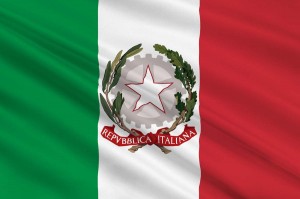
©Bigstock.com/Germans
When Italy’s streets and alleys glow in the national colour Savoy blue, when the five-pointed Stella d’Italia decorates large squares, and when the aerobatic demonstration squad Frecce Tricolori performs its artistic show in the skies over Rome’s Imperial Fora, it has to be June 2, Italian National Day. The Festa della Repubblica (Eng. “Republic Day”) commemorates the referendum of 1946, which lead to the abolishment of the monarchy and the foundation of the Italian Republic. However, the Italian public had to endure many hard years to finally get a reason to celebrate.
The road to the referendum
Victor Emanuel II from the House of Savoy was declared King of Italy on 17 March 1861 in Turin, which was the nation’s capital at the time. It was the final act of the Italian unification movement Risorgimento, which facilitated the consolidation of the country’s sovereign regions and principalities. Italy initially became a world power, was one of the driving forces in the colonialization of East Africa and turned Northern Italy into an industrialised hotspot, while the south lagged behind, in some parts even facing devastating poverty.
A catastrophic national crisis struck Italy after the end of World War I. Social inequality and political disputes between Marxist and liberal-conservative parties caused a highly precarious, even dramatic situation that resulted in the rise of fascism. Legitimised by King Victor Emanuel III and authorised to form a government, Benito Mussolini seized power, gradually undermined and, ultimately, eradicated democracy, and formed an alliance with Nazi Germany joining the fascist regime’s side in World War II. Mussolini’s deposition and arrest and the consequent formation of a military government under Field Marshal Pietro Badoglio put an official end to the fascist regime leading to the signing of the Armistice of Cassibile with the Allied Forces on 8 September 1943. Combat in the north, still occupied by the Germans, would last until 29 April 1945.
The referendum of 1946
The heavily discredited Victor Emanuel III abdicated the throne on 9 May 1946, his son Umberto II became King of Italy. Umberto’s power, however, was frozen until 2/3 June 1946, when a referendum, which had already been agreed upon before the change of power, decided on Italy’s future form of government. At the time, Umberto ascending the throne was mostly seen as a strategic step as he was decisively more popular with the Italian people than his father Victor Emmanuel III. However, 54.3% or 12,717,923 Italians – South Tyrol, Trieste and Gorizia didn’t participate – voted for the country to become a republic with only 10,719,284 votes for the monarchy. Umberto II had to leave the country on June 18 and went into Portuguese exile. The constitution prohibited him from returning to Italy.
The government named June 2 Italian National Day in 1948. The festivities took place on the first Sunday in June between 1977 and 2000 before “returning” to June 2 in 2001.
The big parade in Rome
The Festa della Repubblica Italiana is celebrated throughout the entire country on June 2 with various big parades in all cities and many villages. The main festivities, however, take place in Rome. A big military parade to honour the republic has been held every year in front of the Imperial Fora with only very few exceptions – the 1963 festivities were postponed until November due to the passing of Pope John XXIII while those in 1976 were cancelled entirely except for the wreath ceremony because of the devastating earthquake in Friuli. Various units, such as the Army, the Navy, the Financial Guard and the State Firefighters Corps, march in front of the most important holders of state offices in a festive ceremony accompanied by an amazing flyby show by the aerobatic demonstration squad Frecce Tricolori. Next up is the ceremonial laying of a laurel wreath on the Tomb of the Unknown Soldier. In the afternoon, the gardens of the Quirinale Palace, seat of the Italian president on the Colle Quirinale, are opened to the public. Performances by military bands accompany the festivities.
You absolutely have to experience the Festa della Repubblica Italiana in Roma at least once – find the best travel suggestions on ZAINOO!